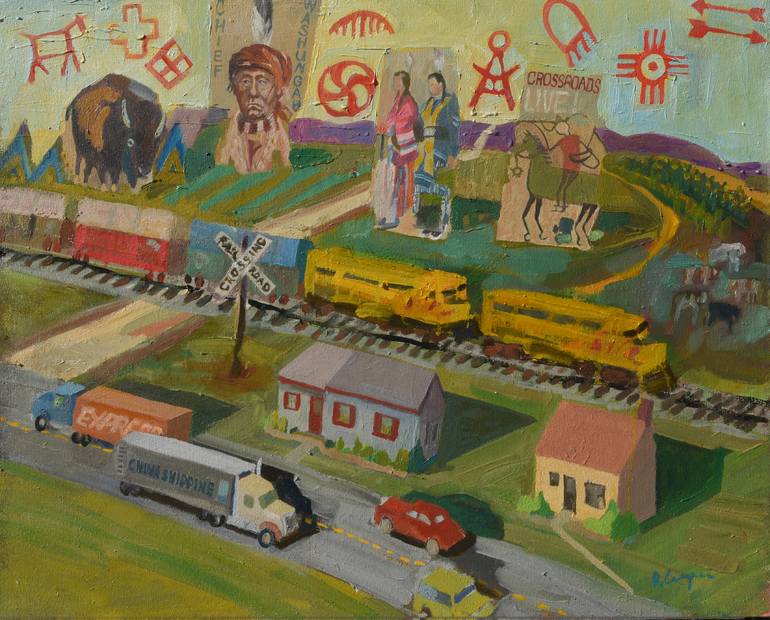






186 Views
3
View In My Room
Painting, Oil on Canvas
Size: 36 W x 30 H x 1 D in
Ships in a Box
$2,160
Shipping included
FREE 14-Day Returns
Trustpilot Score
186 Views
3
Artist Recognition

Artist featured in a collection
ABOUT THE ARTWORK
DETAILS AND DIMENSIONS
SHIPPING AND RETURNS
The demand for goods along The New Santa Fe Trail created new means to transport them more economically and faster. Congress came up with the idea of using trains to establish a transcontinental railroad to supply goods and people to the west. In 1862 the Central Pacific Railroad began building east...
Year Created:
2017
Subject:
Styles:
Mediums:
Painting, Oil on Canvas
Rarity:
One-of-a-kind Artwork
Size:
36 W x 30 H x 1 D in
Ready to Hang:
Not Applicable
Frame:
Brown
Authenticity:
Certificate is Included
Packaging:
Ships in a Box
Delivery Cost:
Shipping is included in price.
Delivery Time:
Typically 5-7 business days for domestic shipments, 10-14 business days for international shipments.
Returns:
Free returns within 14 days of delivery. Visit our help section for more information.
Handling:
Ships in a box. Artists are responsible for packaging and adhering to Saatchi Art’s packaging guidelines.
Ships From:
United States.
Need more information?
Need more information?
David Cooper
United States
I paint the experiences of my life, situations I have lived through, and emotions I have felt. Places I have been and lived. s sone of art was done in plein air, the rest in my studio from photographs and others from memory. All drawn directly on canvas and shapes altered during the painting process. My art has been described as living somewhere between reality and expression, contemporary, realism and very mystical. My paintings evolve constantly, changing in form, technique and color; some ending with a pure impression and others more defined. Some were painted in 2 hours and some 1 yr to 30 years. The manipulation of shape and textures is an on-going process and shapes my work into a personal style with a universally recognizable talent to create signature art. I was educated in Graphic Design being taught the Armin Hoffman "Swiss Style" program of visual expression learning the relationships of point, line, and shape. That discipline became the structure of self evaluation. An artist has to know themselves and be true to their unique capabilities. I am an extemporaneous painter with painting as the adventure of exploration. Art critics and judges looking at my body of work have described my art work as such: "Your paintings capture a very impressionistic look on American Life. Your subjects create an everyday attitude to represent figures, landscapes, and still life images through a personal perspective that makes these images feel as if they are already a part of the daily lives of the viewer. Your paintings translate a very resonant feeling of nostalgia, making the viewer feel connected to something so familiar, yet distant, and almost unattainable. Your art conveys such a strong sense of space, stripping away so much real world context that we are all so heavily exposed to, and transport the viewer into this world within the frame, where everything feels so much simpler and peaceful. Your art is an incredibly refreshing experience, as a viewer. It successfully creates a sense of space and mood, emotionally moving the viewer into the world of the painting, and filling them with nostalgia, and a sense of peace. " Charlie Kassabian, RAW
Artist Recognition

Artist featured by Saatchi Art in a collection
Why Saatchi Art?
Thousands of
5-Star Reviews
We deliver world-class customer service to all of our art buyers.
Global Selection of Original Art
Explore an unparalleled artwork selection from around the world.
Satisfaction Guaranteed
Our 14-day satisfaction guarantee allows you to buy with confidence.
Support Emerging Artists
We pay our artists more on every sale than other galleries.
